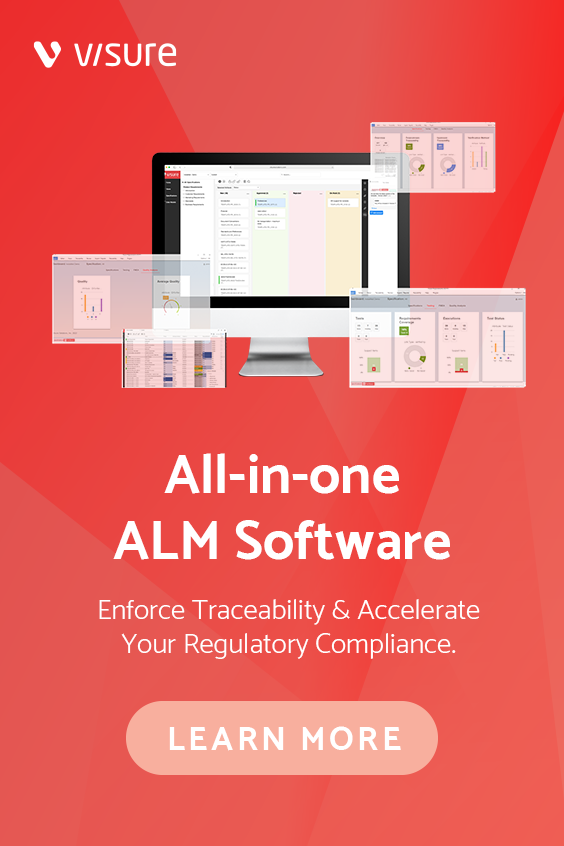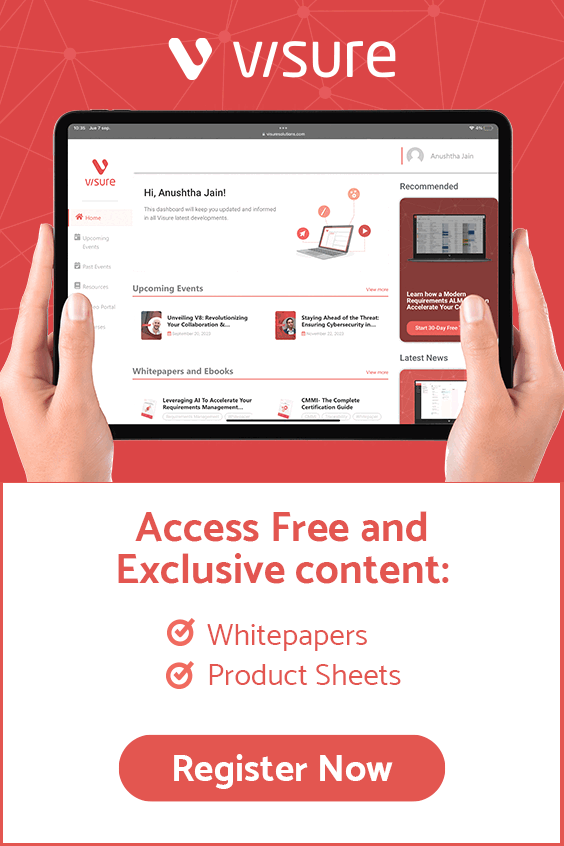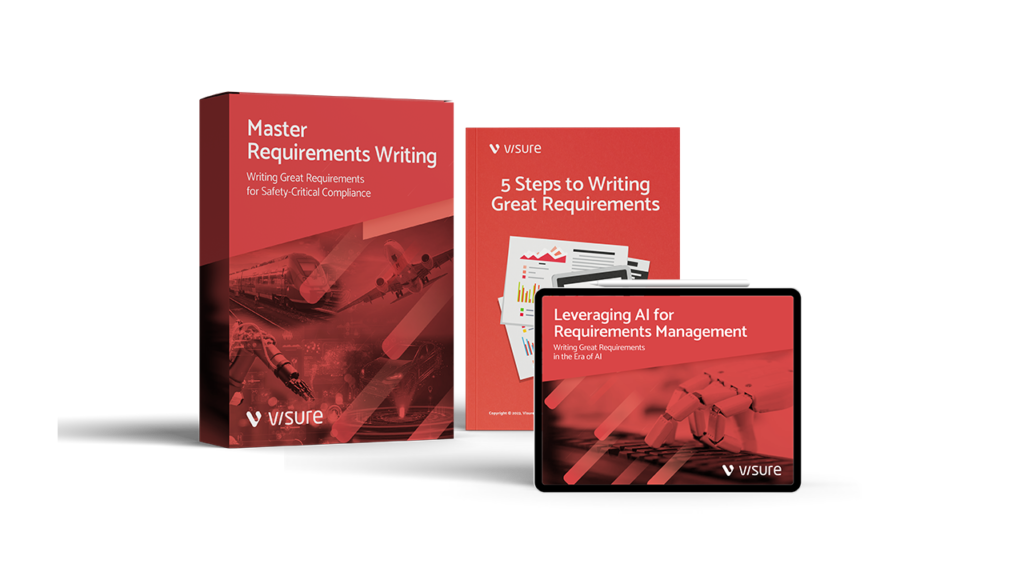In today’s fast-paced product development ecosystem, ensuring quality, compliance, and speed is no longer a choice, it’s a necessity. AI-powered Verification and Validation (V&V) has emerged as a game-changer, enabling organizations to achieve end-to-end traceability, faster certification, and improved product reliability across industries such as aerospace, automotive, defense, and medical devices.
What Is AI-Powered Verification and Validation?
Verification and Validation are critical processes in systems engineering that ensure a product meets its specifications and fulfills its intended purpose. Traditionally, these processes are time-intensive and require manual oversight. However, AI-powered V&V leverages machine learning, natural language processing (NLP), and automation to enhance every stage of the lifecycle, from requirements authoring to certification.
Key Components of AI-Driven V&V
- Automated Requirement Analysis: AI algorithms identify ambiguities, inconsistencies, and testability gaps in requirements.
- Intelligent Traceability: Machine learning models establish dynamic links between requirements, design elements, test cases, and risks.
- Predictive Validation: AI forecasts potential failure points, ensuring early detection of quality and compliance risks.
- Continuous Compliance Monitoring: Real-time data tracking ensures that every change remains compliant with regulatory standards.
The Importance of End-to-End Traceability
End-to-end traceability is the backbone of modern systems engineering and a prerequisite for regulatory approval in highly regulated sectors. It ensures that every requirement is linked to design, implementation, testing, and validation artifacts.
How AI Enables Seamless Traceability
- Automated Link Generation: AI reduces human error by automatically creating and maintaining trace links across complex documentation.
- Change Impact Analysis: With AI-driven traceability, teams can instantly identify how a requirement change impacts downstream components.
- Audit-Ready Reports: AI systems can generate compliance documentation on demand, significantly reducing audit preparation time.
Result: Organizations achieve complete visibility, improved collaboration, and consistent compliance throughout the product lifecycle.
Accelerating Certification Through AI
Certification is often one of the most time-consuming and resource-intensive aspects of product development. Industries such as DO-178C (aerospace), ISO 26262 (automotive), and IEC 62304 (medical devices) require rigorous documentation, verification, and validation evidence.
AI-Powered Certification Acceleration
- Automated Evidence Generation: AI tools can automatically collect, organize, and verify certification artifacts.
- Smart Checklists: Machine learning algorithms help verify compliance with industry standards.
- Risk-Based Prioritization: AI ranks risks and non-conformities, focusing human attention on the most critical areas.
With AI-assisted certification workflows, organizations experience up to 50% reduction in verification time and faster approval cycles from certifying authorities.
Integrating AI with Model-Based Systems Engineering (MBSE)
Model-Based Systems Engineering (MBSE) provides a structured approach to managing complex systems through models rather than documents. When combined with AI-powered V&V, it creates a closed-loop digital ecosystem for development and certification.
Benefits of AI + MBSE Integration
- Automated Model Verification: AI validates model consistency, logic, and requirement compliance.
- Enhanced Collaboration: Teams can use AI to translate model data into actionable verification tasks.
- Adaptive Traceability: AI dynamically updates trace links as system models evolve.
This integration promotes a single source of truth for all engineering data, reducing rework and improving decision accuracy.
Business Benefits of AI-Powered V&V
- Accelerated Time-to-Market: Automates requirement analysis, testing, and documentation, reducing verification cycles by up to 60%.
- Improved Product Quality: AI detects ambiguities and defects early through predictive analytics, enhancing reliability and safety.
- End-to-End Traceability: Automatically links requirements, design, and test data for real-time visibility and seamless impact analysis.
- Cost Efficiency: Reduces manual effort and redundant testing, cutting overall project costs by 40–60%.
- Faster Regulatory Certification: AI auto-generates compliance reports for standards like DO-178C, ISO 26262, and IEC 62304, accelerating audits.
- Higher Team Productivity: AI-driven collaboration tools synchronize teams and eliminate repetitive documentation tasks.
- Scalability and Flexibility: Learns from past projects, adapts to evolving standards, and supports large-scale, multi-domain systems.
- Competitive Advantage: Enables proactive risk management, continuous compliance, and innovation leadership across industries.
Challenges and Best Practices
While the advantages are substantial, implementing AI-driven V&V requires careful planning and data governance.
Common Challenges
- Data inconsistency across tools and repositories.
- Lack of standardized requirements language.
- Resistance to change from traditional engineering teams.
Best Practices for Implementation
- Start with Requirement Quality Analysis: Use AI to detect inconsistencies early.
- Adopt a Centralized Traceability Platform: Integrate tools like Visure Solutions ALM for unified data management.
- Train Teams on AI-Enhanced Workflows: Encourage collaboration between systems engineers and data scientists.
- Leverage Continuous Learning Models: Allow AI to learn from past projects for future efficiency gains.
The Future of AI in Verification and Validation
As industries move toward digital transformation and autonomous systems, AI will play a crucial role in evolving V&V processes from reactive to proactive. The future of verification lies in:
- Self-adaptive testing frameworks
- AI-driven certification audits
- Predictive compliance systems
Organizations that adopt AI-powered traceability and validation now will lead the next era of safety-critical innovation with faster certifications and higher reliability.
Visure Requirements for AI-powered V&V
Visure’s platform is an all-in-one Application Lifecycle Management (ALM) tool, covering Requirements Management, Test Management, Defects & Issues Tracking, Change Management, and Risk Management, all in one place. The platform is built for highly regulated industries, offering features tailored for certification compliance (e.g., traceability dashboards, versioning, impact analysis). It also incorporates AI-driven capabilities: machine learning models for requirements quality analysis, predictive risk identification, and automation of traceability/link generation.
How to Use Visure & LDRA for AI-Powered V&V: Implementation Tips
If your organization plans to adopt Visure for AI-powered V&V, here are best-practice recommendations:
- Define your traceability strategy early: Map out the artifact types you’ll link (e.g., Business Req, Sys Req, Test Case, Risk, Defect). Ensure the meta-model in Visure reflects this for full lifecycle visibility.
- Leverage requirement templates and quality checks: Use Visure’s built-in templates and AI analysis to standardize requirements authoring—making them clear, testable, and audit-ready.
- Establish baseline and change management workflows: Create baselines at key phases, enable version tracking, and use suspect-link propagation to manage requirement changes efficiently.
- Integrate testing and risk artefacts: Manage test cases, defects, and risk items within the same ALM platform. Through Visure’s seamless integration with LDRA, you can automatically verify that every requirement is covered by corresponding code and test results, ensuring bi-directional traceability and automated certification evidence.
- Use AI features for predictive insights: Monitor AI-driven alerts for quality or traceability gaps, enabling proactive risk mitigation and smarter validation decisions.
- Prepare for certification documentation from the start: Configure compliance templates for your target standard (e.g., DO-178C, ISO 26262). Use Visure-LDRA combined reporting to generate complete verification evidence packages.
- Train teams and adapt with change management: Educate systems engineers, testers, and compliance teams on AI-enhanced workflows and Visure-LDRA collaboration to drive consistency and maximize ROI.
Conclusion
AI-powered Verification and Validation (V&V) is transforming how organizations achieve end-to-end traceability, faster certification, and higher product quality. By combining AI with model-based systems engineering (MBSE), teams can eliminate manual inefficiencies, ensure compliance, and maintain complete visibility across the development lifecycle.
The Visure Requirements ALM Platform, enhanced with AI-driven automation, requirements quality analysis, and real-time traceability, empowers organizations to streamline their entire V&V process. When integrated with LDRA, a global leader in software verification, testing, and certification automation, it creates a closed-loop ecosystem that connects requirements, code, and test results.
Together, Visure and LDRA deliver a unified, audit-ready solution that simplifies regulatory compliance for standards like DO-178C, ISO 26262, IEC 62304, and ARP4754A, significantly reducing verification effort and accelerating time-to-certification.
In short, adopting AI-powered V&V through Visure and LDRA enables engineering teams to deliver safer, compliant, and innovative products faster, defining the future of intelligent systems engineering.
Check Out The Joint Webinar
In this webinar, we’ll cover,
- AI in Verification & Validation – Explore how AI automates verification and validation tasks, improving accuracy while reducing manual effort.
- End-to-End Traceability – Ensure seamless connections from requirements through testing to certification across the full lifecycle.
- Accelerating Compliance & Certification – Learn how AI helps streamline regulatory standards like DO-178C, ISO 26262, and IEC 62304, reducing certification timelines.
- Enhancing Quality & Minimizing Risk – Detect gaps, inconsistencies, and errors early using AI-driven insights for safer, higher-quality products.
- Practical Use Cases & Best Practices – See real-world examples from aerospace, automotive, and medical device industries, and strategies for successful AI adoption.


